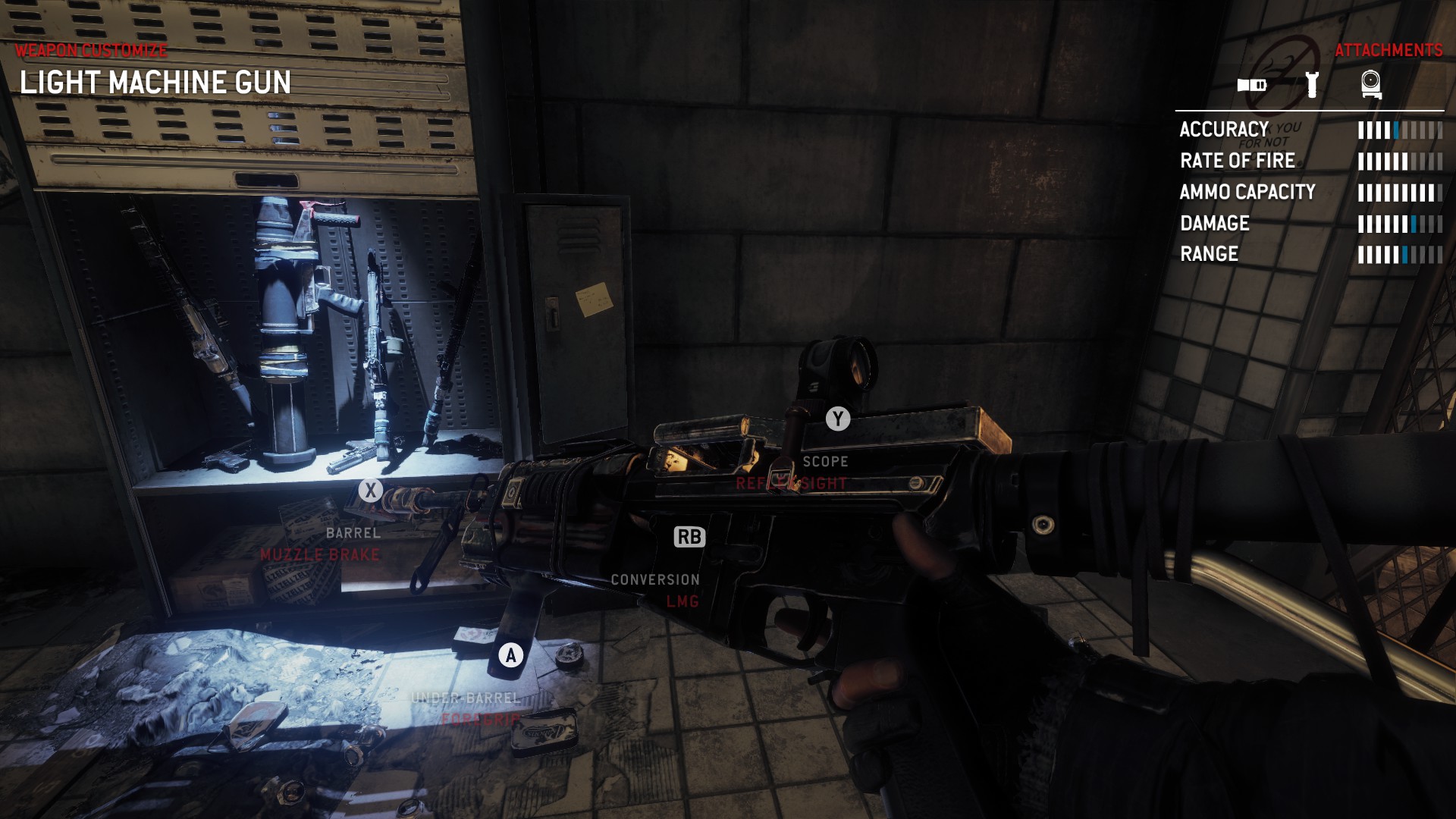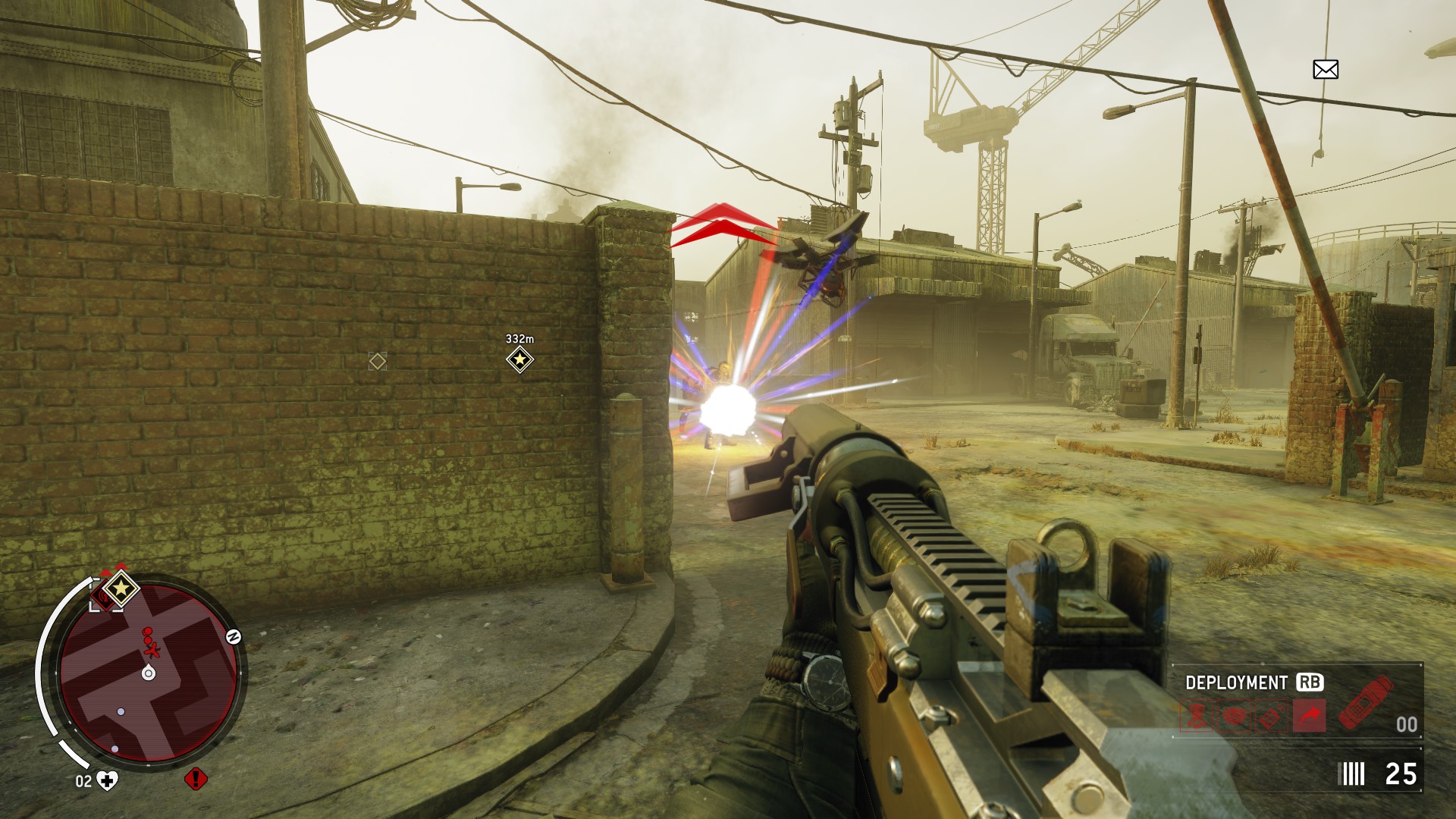
I also never felt like the different guns really mattered all that much. The pistol has three configurations: regular pistol, submachine gun, and a silent dart gun. You can get a muzzle for the pistol and submachine gun so they’re quiet, but honestly, the dart gun was strong enough to kill enemies in one shot and it was already silenced. The same goes for the rest of the guns and their variants. I usually found one version of each type that worked for me and never considered switching to another one due in no small part to the amount of time it took to do so.
There’s also the matter of having to unlock all of those attachments and different gun types. You’ll start with the pistol and its SMG configuration, but everything else requires you to either buy it with cash or with Korean People’s Army (or KPA) Tech Points. The points are gained from freeing the different areas of the city by taking over strongholds or capturing Strike Points. These are easy enough to acquire and I ended up with an excess amount about halfway through.
The cash, on the other hand, is a grind. Most of the cash you’ll earn for completing the main story missions, but if you really want to purchase all of the weapon upgrades (which can increase reload speed, damage, and/or maximum range) and gear (i.e., character upgrades that allow you to carry more ammo, run faster, etc) then you’ll have to scour the streets of Philly looking for valuables to sell. Don’t let the name get you too excited, though; every computer memory chip, or tin of beans, or transistor you find isn’t worth much and should you die before you sell them you’ll lose any you have in your possession.

Much of that “progression,” then, becomes a tedious chore instead of anything that empowers the player. While it’s worth the KPA points to buy new weapons and new gadgets, the weapon upgrades never feel like they make enough of an impact to matter. Buying a few pieces of gear and upgrades are all you’ll need to make it through the campaign. The weapon and upgrade systems, though, are just a part of the underlying issue to Homefront.
From the small health bar and "stealth" mechanics, to the moddable guns and incendiary devices strapped to RC cars, I feel the developers wanted to convey the idea that you are just an average person taking on a much stronger force. The first big encounter you have with the North Koreans even spells it out in so many words when you set up an ambush against a group of soldiers with an armored vehicle. The problem is that after that initial encounter, the next several story missions either entail attacking an enemy position with a bunch of A.I. teammates, or running into some random building to interact with a thing. None of these require a great degree of espionage or stealth to accomplish. What’s more you don’t unlock all of the various gadgets and guns you need to do anything more elaborate than throwing a bomb at a group of soldiers until you’ve already played through a third of the game.
By the time I reached that point, though, I was engaging with the game as a first-person shooter with poor stealth mechanics and clunky weapons. I didn’t want to make full use of the various systems in the game to create elaborate strategies involving distractions, remote bombs, and moddable weapons; I didn’t want to complete side jobs to earn more cash to upgrade my guns or buy new gear. I wanted to get in, do what needed to be done, and move on. There was never much incentive (outside of avoiding some frustration) for me to try any different tactics. Thus each new zone became the same routine; capture as many Strike Points and Strongholds as I could so I wouldn’t have to deal with random patrols, then complete the story missions for that area. I had hopes that the co-op Resistance Mode would, at least, provide something new.